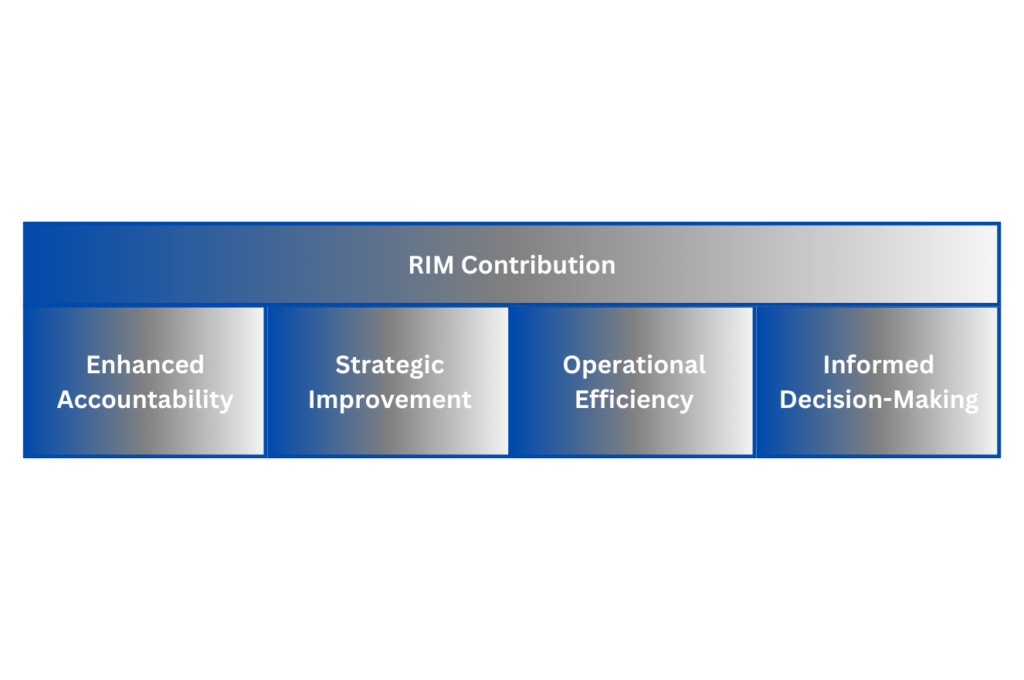RIM: The New Frontier in Measuring Implementation Recommendations

Author: Dr. Sutthi Suntharanurak(1)
Introduction
In the dynamic landscape of public sector management, the pursuit of enhanced accountability, efficiency, and transparency is never-ending. Traditional metrics and oversight mechanisms, while foundational, often fall short in capturing the continued progress of implementing audit recommendations.
In my recent short research paper, I posed a simple research question: How do Supreme Audit Institutions measure the implementation of recommendations? The measuring system should provide concrete and measurable figures such as ratios, levels, or percentages.
From my exciting findings, I have termed this system Recommendation Implementation Metrics (RIM), which includes Implementation Rate (IR), Impact Score (IS), and Time to Implementation (TTI). This system marks an evolution in how we understand and improve the implementation of recommendations from SAIs. RIM provides a comprehensive framework. It tracks and enhances the effectiveness of these implementations.
The Motivation for a New Approach
The beginning of IR (Implementation Rate), IS (Impact Score), and TTI (Time to Implementation) stems from a critical need to transcend beyond mere compliance towards meaningful change. Traditional measures, often limited to compliance rates and binary outcomes, lack the depth to reflect the actual impact of recommendations and the efficiency of their implementation.
In an era where public trust is paramount, these new metrics offer a way to quantify and communicate the effectiveness of efforts to improve public sector operations, ensuring that recommendations do not merely end as reports on a shelf but translate into tangible improvements.

Why RIM? The Comprehensive Approach
The drive towards developing RIM springs from a recognized need for a more continuous, holistic view of how recommendations are implemented within public sector entities. Traditional metrics, while useful, often offer a limited perspective—focusing on compliance without adequately capturing the qualitative impact or the efficiency of the implementation process.
However, in a climate where public accountability and the optimal use of resources are under increased scrutiny, RIM stands as a testament to the commitment towards transparency, strategic improvement, and operational efficiency.
What Constitutes RIM?
From my research, RIM is built on three foundational pillars: IR (Implementation Rate), IS (Impact Score), and TTI (Time to Implementation).
In the real world, we could measure the successful of SAI through public trust, acceptance of audit entities, and other stakeholders. We could find the proxies like implementation rate, measuring audit impact, even implementation timeline.
Implementation Rate (IR)
Implementation Rate (IR) quantifies the percentage of recommendations that have been fully realized within a given timeframe, offering a straightforward measure of compliance and responsiveness. For example, consider a scenario where the SAI issues three recommendations.
- Recommendation 1: The audit entity should improve procurement processes to reduce costs.
- Recommendation 2: The audit entity should implement a new IT system to enhance data security.
- Recommendation 3: The audit entity should develop and enforce a policy for regular financial audits.
Assigning Values of Implementation Rate (IR) This is calculated based on the percentage of recommendations that have been fully implemented. Let’s say:
- Recommendation 1: Fully implemented
- Recommendation 2: Partially implemented (considered as not fully implemented for IR calculation)
- Recommendation 3: Fully implemented
Implementation Rate (IR) Calculation: 2 out of 3 recommendations have been fully implemented, so the IR is 67%. The IR objective is to measure the percentage of recommendations that have been fully implemented within a specified timeframe.
The SAI could set up criteria and develop a definition of ‘Fully Implemented’. It could also clearly define what counts as “fully implemented.” This could include criteria such as all suggested actions completed, objectives met, or specific outcomes achieved.
The SAI could establish a standard timeframe within which recommendations are expected to be implemented. This could vary based on the nature of the recommendation (e.g., short-term vs. long-term). It could determine how recommendations and their implementation status will be tracked. This might involve regular progress reports from the audited entities or follow-up audits.
Impact Score
The second metric, Impact Score (IS) assigns a qualitative value to each recommendation based on its potential to enhance efficiency, reduce waste, or improve effectiveness. It provides an understanding of the significance of each recommendation. Impact Score (IS) represents measuring the Weight of Change.
Understanding the impact of each recommendation is crucial for prioritizing efforts and resources. The Impact Score assigns a qualitative value, typically on a scale of 1 to 5, to each recommendation based on its potential to enhance efficiency, reduce waste, or bolster effectiveness.
The Impact Score (IS), is similar to the notion of Audit Impact. This metric necessitates those auditors quantify the degree to which each recommendation, when implemented, influences the audited entity. Distinct scores are allocated to each recommendation to reflect their varying degrees of impact. In essence, the scoring system does not treat all recommendations uniformly.
Initially, scores are designated on a scale from 1 to 5, with 1 representing minimal impact and 5 representing maximum impact. Consider an example involving an entity that was previously audited: the auditor observes that the implementation of the first recommendation results in an impact scored at level 2. The second recommendation, if implemented, would achieve an impact of level 5, while the third recommendation registers an impact of level 3.
Therefore, the aggregate Expected Impact Scores for this audit amount to 2 + 5 + 3 = 10. However, the Actual Impact Scores realized are 2 + 0 + 3 = 5 (in this scenario, the entity has not implemented the second recommendation, hence no impact accumulates from it). This example demonstrates that the audited entity has actualized an impact constituting 50% of the Expected Impact Scores, equating to 5/10.
Actual Impact Score < Expected (Impact Score) (1)
From the equation (1), the establishment of Audit Impact or Impact Scores is instrumental for SAIs, as it quantifies the extent to which their recommendations have facilitated substantive changes within the audited entities. Hence, SAI should improve the actual impact score (IS) closed to expected impact score or E(IS).
Time to Implementation (TTI)
Time to Implementation (TTI) measures the swiftness of the response, calculating the average time taken from the issuance of a recommendation to its full implementation. This metric highlights the efficiency and agility of the implementation process.
The Time to Implementation (TTI) identifies the average time taken from the issuance to the reported implementation of the recommendations. For example;
- Recommendation 1: Implemented in 6 months.
- Recommendation 2: Implementation started but not completed; current duration is 8 months.
- Recommendation 3: Implemented in 9 months.
Average TTI Calculation: (6 + 9) / 2 = 7.5 months (only fully implemented recommendations are considered).
Contributions of IR, IS, and TTI
Together, these tools offer several views of implementation progress. Implementation Rate (IR) boosts accountability by providing a clear compliance rate; Impact Score (IS) ensures strategic focus by highlighting the impact of recommendations, and; Time to Implementation (TTI) underscores efficiency by tracking the speed of implementation. They collectively enhance transparency, inform strategic decision-making, and facilitate a more dynamic, responsive approach to public sector improvement.
The Contribution of RIM: Elevating Public Sector Performance
RIM contributes to the public sector in several key ways:
- Enhanced Accountability: By providing a transparent, quantifiable measure of how recommendations are implemented, RIM enhances the accountability of public sector entities to both SAIs and the public.
- Strategic Improvement: The IS component ensures that recommendations with the highest potential impact are prioritized, guiding strategic resource allocation and efforts.
- Operational Efficiency: TTI highlights the efficiency of the implementation process, encouraging entities to streamline their procedures and reduce bureaucratic delays.
- Informed Decision-Making: Together, the components of RIM offer a multi-dimensional view of the recommendation implementation process, supporting more informed decision-making by both SAIs and the entities they audit.

Conclusion
In summary, RIM stands as a transformative set of metrics that might reflect a new era in public sector accountability and efficiency. By adopting RIM, Supreme Audit Institutions and audited entities alike can ensure that recommendations do not merely end as suggestions but evolve into impactful, tangible improvements. This comprehensive approach emphasizes a commitment to excellence. It propels public sector entities towards a future marked by increased transparency, efficiency, and strategic growth.





